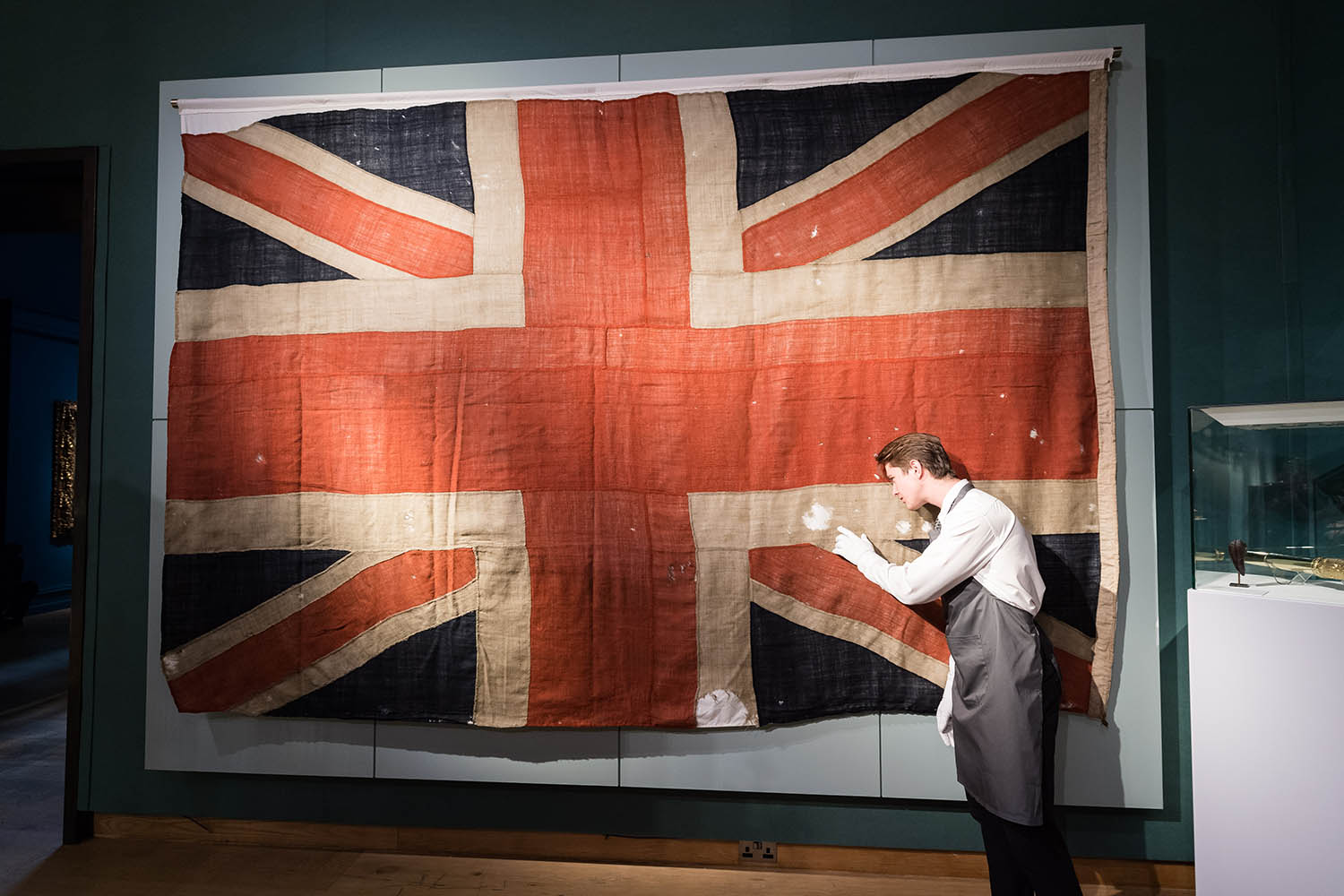It’s the hottest day of the year so far, but the auction room at Christie’s in central London is cool and unsettlingly quiet. Banks of staff and visiting brokers flank the walls, poised to take phone bids from around the world. Any minute, a selection of “exceptional” lots will go under the hammer, including a crystal glass four-poster bed, made in England for Indian royalty at the height of the British empire, a gilded telescope gifted to the future Edward VII and a table ornament that once graced the home of Madame de Pompadour.
Yü-Ge Wang is our charismatic, elegant auctioneer; her style consciously balletic as she swoops down for each conclusive knock of her gavel. To my left stands a man in a pale grey suit who looks, I think, quite like the late queen’s nephew David Armstrong-Jones, the 2nd Earl of Snowdon – and, in fact, it is. He’s on the phone to a prospective buyer. Is Snowdon, the former Viscount Linley, a furniture designer and a previous chair of Christie’s, perhaps after the gleaming telescope that belonged to his great-grandfather? Or is he keen on the same showstopper that brought me here: a rare union jack from the Battle of Trafalgar that has miraculously survived?
Faded, yet distinctly still red, white and blue, it is almost two and a half metres high and about three and half metres wide, and with, as Wang puts it, “everything that you want” in the way of authentic signs of battle fatigue. The low end of the estimated price is £500,000 and it has already caused “a Mexican standoff” across tow nin west London.
Over at the Royal Chelsea hospital’s Treasure House Fair, extraordinarily, another union jack from Trafalgar is on offer: the price reached at Christie’s will determine the fate of this flag. “It is such a coincidence,” says Martyn Downer, an expert on naval memorabilia, who is handling the Chelsea sale for Greens of Cheltenham. “But, obviously, my prospective buyers may well wait to see what the Christie’s flag makes.”
There are only three known British flags to have survived the 220 years since the last cannonball was fired that October day off the south-west coast of Spain, and two were up for sale in the same week.
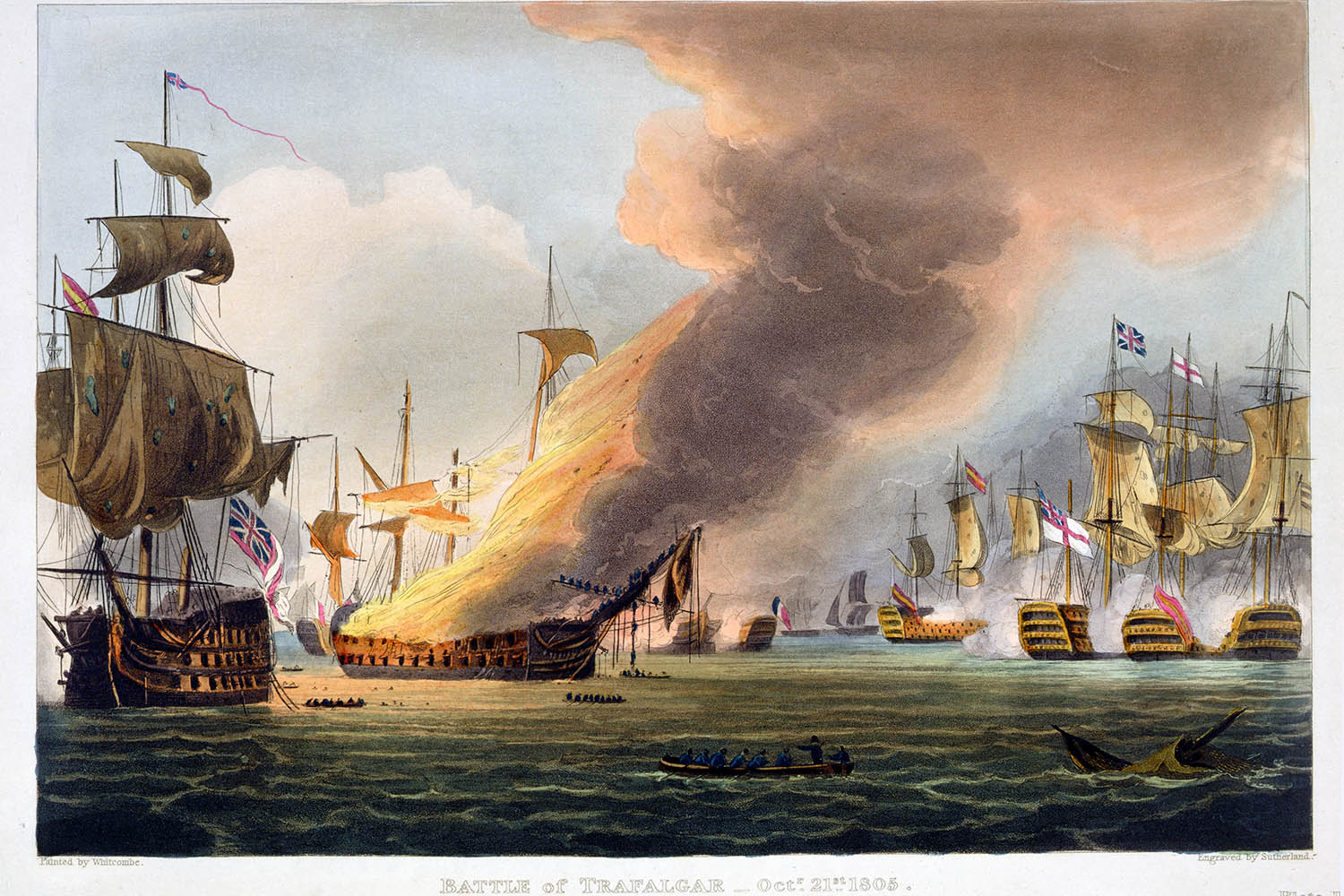
The Battle of Trafalgar, 21st October 1805 by Thomas Sutherland
Priced at £450,000, the smaller Chelsea flag looked the comparative bargain. Smartly framed, it had been handed down through the family of Charles Antram, a master’s mate on the 100-gun HMS Royal Sovereign. This ship, the fastest in the fleet, was commanded by Adm Cuthbert Collingwood and was first into the fray. After the battle, Antram nabbed the flag and kept it safely as a souvenir inside a wooden storage box from Nelson’s own cabin.
Downer naturally knows all the big collectors, but he expects to sell the Trafalgar flag to a newcomer. “I would imagine a buyer will come out of nowhere,” he says. “The battle is famous, of course, but Nelson is an icon. People tend to retro-fit current preoccupations onto him, re-examining him. And, like Churchill, he gets summoned at times of strife. But even if you know little about Nelson, or about Trafalgar, to have a flag like this on the wall, with battle scars, is more than a talking point.”
The flag has sold once before, going for just a few hundred pounds in 2003, because it had been misidentified as a relic of the earlier Battle of the Nile. Antram’s brother had fought there, but the flag could not date that far back as it features the red saltire of Saint Patrick. This was added to the design, we know now, after the 1801 union, four years before Trafalgar.
The flags were hand-stitched from “bunting”, the rolls of wool fabric supplied to the navy, and so generations of moths have left their mark alongside the shrapnel marks and gunpowder stains. A conservator in Greenwich has mended most of the insect damage and even washed it. Not on a spin cycle, I’m assured.
“It had accumulated a lot of stuff. We wanted to get it back to the status quo ante, on the day after battle,” says Downer. “It is also satisfying as an artwork and so we have treated it like that.”
“It’s Warholian,” agrees Philip Mould, the renowned dealer and gallerist, who has a neighbouring stand at the Chelsea fair. “And its scale is extremely attractive.”
The other flag, at Christie’s, once flew on HMS Spartiate and has come down through the family of Capt James Clephan, second lieutenant on that ship. It also has been on the market just once before, when it was acquired in 2009 for £396,800 by the late US collector Benjamin Reed Zaricor. And, like the Chelsea flag, it has convincing signs of wear and tear. According to the seller, the Zaricor Flag Collection, there are shards of embedded metal thought to be from a cannonball.
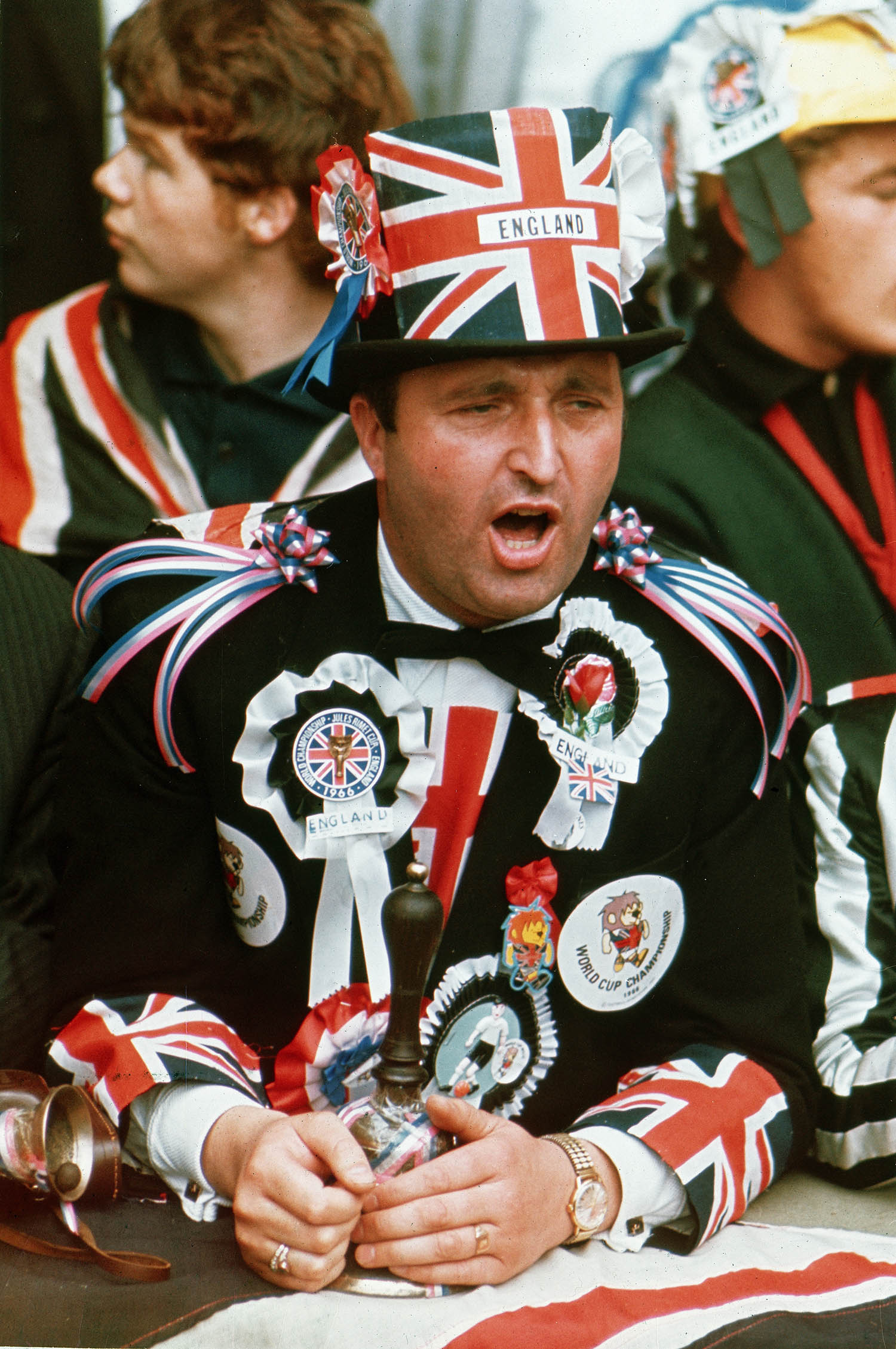
Showing his colours: a football fan in 1966
It was common practice, I learn, for warrant officers or juniors to take home mementos after an action, and union jacks were not official navy property. The question is: why are they so valuable now, particularly after selling for much less just a decade and a half ago? The answer may lie in shifting attitudes to national identity.
Conventionally, flags are used to draw together a population. A nervous nation, whether or not “an island of strangers”, habitually calls upon its citizens to stand and salute. At times, though, there has been a kind of educated disdain aimed at the flag. As George Orwell put it: “If you were an intellectual you sniggered at the union jack.”
A more tangible factor behind the flags’ increased value, though, is a greater appreciation of their scarcity. By rights, there should be more of them. There were 27 ships in the British fleet that faced the combined force of the Spanish and French, and Nelson had given an unexpected order for them all to raise identifying colours. “A union jack is to be suspended from the fore top gallant stay,” he decreed 11 days before the battle. It was crucial to his plan that “friendly fire” was minimised.
Christie’s London head of books, Thomas Venning, makes the point: “Horatio Nelson is one of the great patriots and leaders of men in British history, and this sale result is a tribute to his inspired decision to have his fleet fly the union jack in action for the first time ever at the Battle of Trafalgar.”
And they were jacks rather than union flags. Strictly speaking, a union jack was flown on a jack staff, a pole low on the bowsprit. So although union jack might sound like a jolly personification of the flag, akin to John Bull or Jack Tar, it is merely a reference to its place on the rigging. It is a pedantic distinction now to all but a scholar of flags – a vexillologist – since ship designs had changed even by 1805.
The third surviving Trafalgar flag, and the only known other, is in Greenwich at the National Maritime Museum. It came from HMS Minotaur, a ship of the line, and was also recovered by a master’s mate.
Perhaps all three are rightly “museum pieces”. Certainly, excitement about the flag sales is not simply down to the link to Nelson, who famously died at Trafalgar on the deck of his flagship, HMS Victory, in the arms of his friend Hardy.
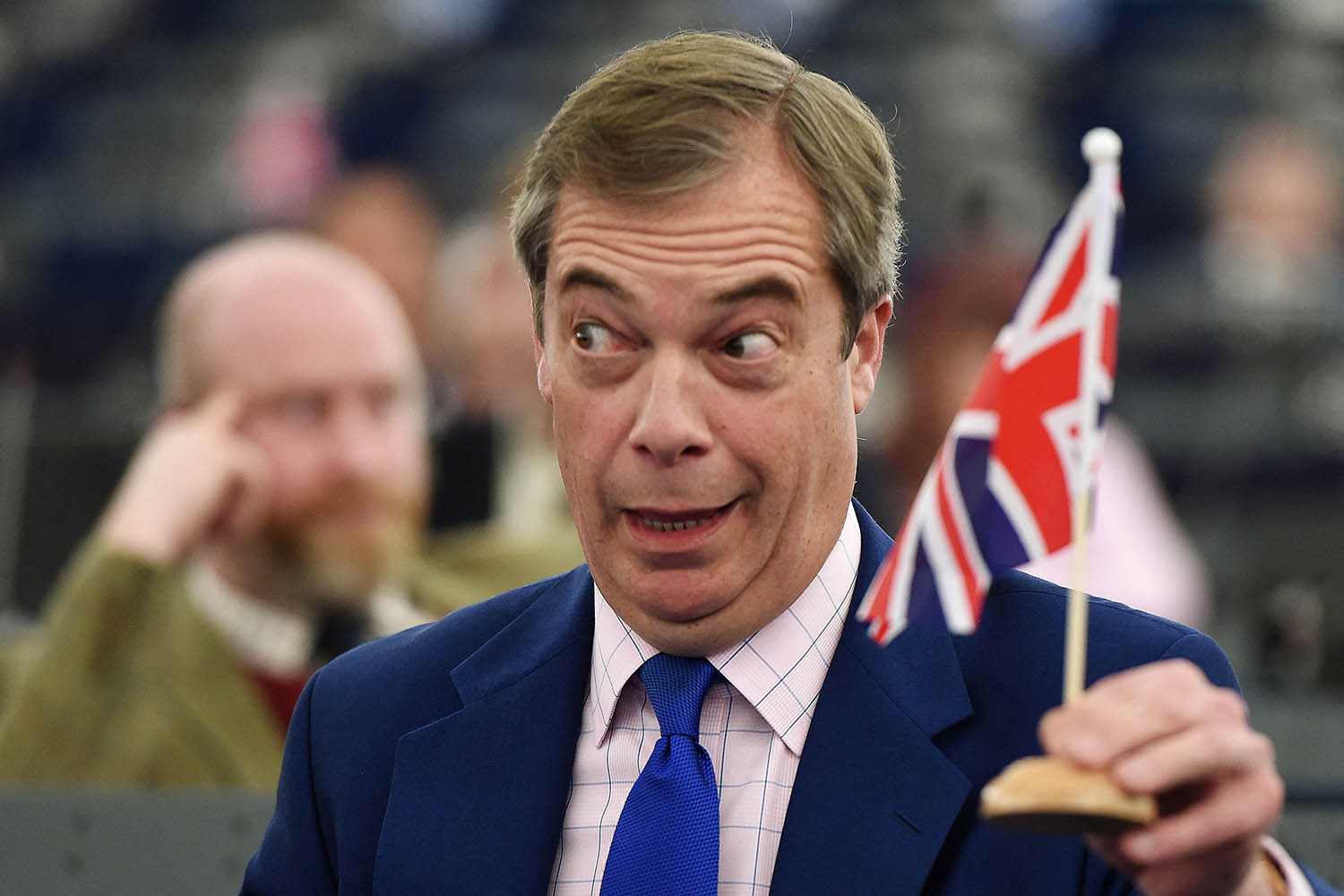
Flying the flag: Nigel Farage
It is also because the battle was such a pivotal moment in the country’s history. It is Britain’s most celebrated naval success and held off an impending invasion, against all the odds. The French and Spanish allied fleets had six more ships, 420 more guns and nearly double the manpower. But Nelson’s unorthodox strategy of cutting directly through the opposition paid off: 20 of the 33 enemy ships were captured, while Britain lost none.
So who will acquire the flags that bear witness to that triumph? “There are a lot of people I’m not allowed to sell to,” says Downer. “It can’t go to Moscow, due to sanctions.” He can also use his own discretion. “I wouldn’t want it cut up and sold on as fragments. Although, actually, this is what happened after Nelson’s funeral. They tore up his flag and handed out pieces as keepsakes.”
If the flags go to foreign buyers, the government may impose an export bar, though this would probably be appealed. Downer likes to imagine his sovereign flag behind the desk of someone impressive. An anglophile plutocrat? Elton John? “Nelson brings very specific interest and there are core pieces for – you could call them a lot of things – Nelson nerds. Some of these are women, but they usually collect letters and documents. An object like this has much wider appeal.”
Maritime enthusiasts, Downer insists, are also different to patriots. He tells me that, for the British, love of the sea can rival love of country. After all, the nation’s favourite painting is JMW Turner’s study of the sad fate of another Trafalgar survivor, The Fighting Temeraire.“Even so, the union jack is a national emblem, so it is an entry point into nationalism, I suppose.”
After Nelson’s funeral, they tore up his flag and handed out pieces as keepsakes
Soon after examining the historic pair up for sale, I spotted two other, modern-day union flags strung loosely along a gantry over the M25 near the Cobham services. What can they mean to drivers passing underneath, or to whoever risked life and limb to put them up there? Sunder Katwala, director of the thinktank British Future, has a fair idea. “First of all, it is a great flag. It’s a very distinct idea. It has got imperialism in it, but essentially it still marks an Anglo-Scottish union,” he says, adding that since its creation, it has fallen in and out of favour. “If you look at footage of the 1966 World Cup, the crowd is a sea of red, white and blue. Whereas, by 1996, it’s all red [Saint] George’s Crosses. Now that might have been because the team had a game against the Scots, but it was still a year before [the] devolution [referendum].”
The 1990s saw a rise in slightly kitsch nationalism, with embroidered union jack samplers and cushions appearing as a kind of punk parody of the American household’s fondness for the Stars and Stripes. Katwala sees this quaint revival as part of Cool Britannia’s replay of swinging 60s Britain, marked most notably by the dress that Geri Halliwell wore and the union jack-emblazoned Mini Cooper. On becoming prime minister in 2007, Gordon Brown took it a stage further. He planned to drop the 1924 edict that stopped the union flag being flown for more than 18 agreed days a year, including the monarch’s birthday and Remembrance Day. Brown wanted to see it above all public buildings. “It is critical that this symbol is not hijacked by those who seek to work against values of tolerance and respect,” he said.
Brown’s scheme, ironically, did not fly, but four years ago, Boris Johnson returned to the same idea. He also intended to boost civic pride by waving the red, white and blue. But post-Brexit, the union flag has marked out embattled territory. “Nigel Farage and Reform rarely use the George’s Cross, although the National Front has used both,” says Katwala, whose research indicates some public resistance to the use of any flags in politics. It reminds them of Northern Ireland, he says.
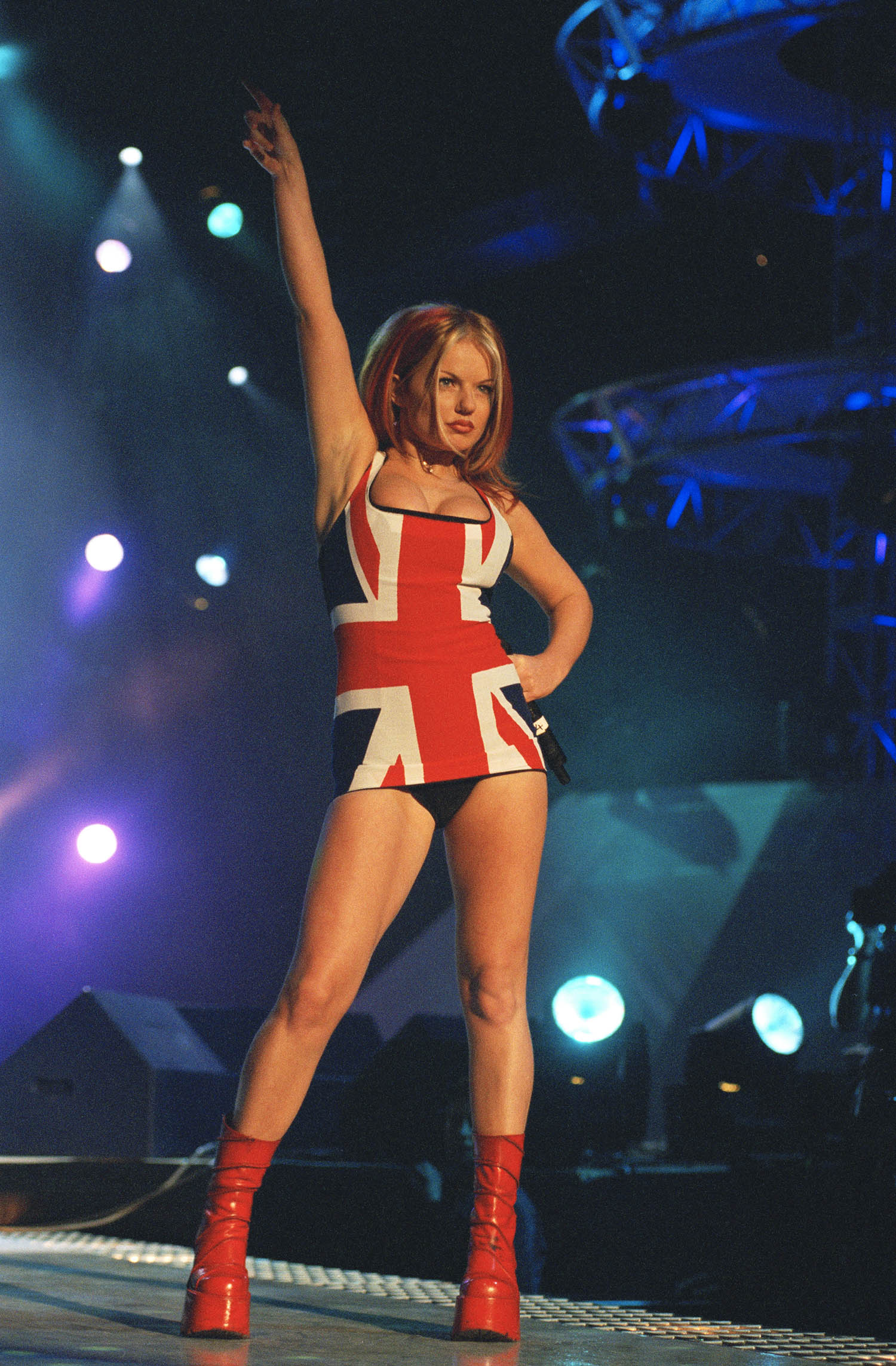
Flag fashion: Geri Halliwell in 1997
Traditionally, union jacks are still seen as separate to personal identity: something for ceremonial days or to wave in support of the NHS or the Olympic team. Today, as a design, the union flag also has more middle-class associations than the Saint George’s Cross, redolent of village greens, pots of jam and Marks & Spencer (it’s printed on the company’s paper bags).
At Christie’s, Snowdon has just bought a rare lapis lazuli and ormolu serving dish for £592,200, including fees – and now the true commercial value of the HMS Spartiate’s flag is about to be set, in lot 25. The head of the sale, Thomas Williams, is bidding on behalf of someone for the Trafalgar union jack.
Suddenly, the phone line drops out. Maybe the prospective buyer is out at sea? Finally, after a tight tussle with an online bidder, Williams secures the prize for his anonymous buyer for the princely sum of £1,068,500, including fees, exceeding the upper estimate of £800,000.
“I remember when I saw it unfurled for the first time,” Williams says the next day. “It had an aura about it – an object so completely infused with its extraordinary history. A real ‘goosebumps’ moment.”
Hours after the closure of the Chelsea fair the next day, Downer calls from a sailing trip to tell me he too has struck a deal. Helped by the “extraordinary” Christie’s result, he has sold his flag for a six-figure sum to an undisclosed buyer. Both sides can claim a victory.
Such a state of peace, or at least truce, befits a flag that was never designed for fighting. It was always intended to reflect the bonds holding the British people together. Few would go as far, though, as the Leeds-born poet laureate Alfred Austin did in Edwardian times, when he wrote: “And when the ‘Union Jack’ is seen /
Rippling o’er wave and wind, /
Men hail it, for its tidings mean /
Peace unto all Mankind.”
Photographs by Getty Images
